September marks the official end of summer with the autumnal equinox on September 22nd. We’re seeing the end to a lot of summer produce, like corn, tomatoes and zucchini, while also seeing the emergence of fall staples, like apples, sweet potato and pumpkins. Some areas of the country are starting to see cooler weather and leaf color changes, while others are still experiencing 90+ degree weather. September brings a good mix of late summer and early fall weather and I love getting to showcase that change of seasons in my recipes this month, so stay tuned!

Welcome to my September Produce Guide! September is one of my favorite months, as far as produce variety goes. My garden is just hitting its stride with tomato production, but we also harvested our first pumpkin the other day! It’s a great time of year to combine fresh summer recipes with hearty warm flavors. October will be full on fall fruits and veggies, so make sure to enjoy the last of the summer crops while they’re still in season.
Below I’ve highlighted a few of my favorite late summer/early fall produce. I added links to recipes that utilize them in different ways, along with some general information and health benefits.
*Please keep in mind that different areas of the country have different growing seasons, so what is in season here may not be what is in season where you live. We have a very short growing season in the high desert, which means that most people aren’t planting things like tomatoes and zucchini until mid-late May and harvesting late June or early July.
SEPTEMBER PRODUCE GUIDE
APPLES
Apples belong to the Rosaceae, or rose, family, along with strawberries, peaches, cherries and almonds. Most people, myself included, usually associate apples with fall, but there are a few late season varieties that are in season right now! Late season varieties include Honeycrisp, Braeburn and Corland apples. Apples are great because they can be used in both sweet and savory recipes. I love putting them into everything from baked oatmeal and muffins to salads and stuffing. They add a nice refreshing sweetness and a crunchy texture, when served raw.
As the saying goes, “An apple a day keeps the doctor away” so you know that apples must have tons of healthy benefits to them! Apples are a great source of vitamin C, fiber and antioxidants. They can also help lower bad cholesterol, maintain a healthy weight and they are even known for boosting brain health. Apples are high in flavonoids, which are known for having anti-inflammatory properties and can help reduce inflammation inside the brain that could lead to Alzheimer’s disease.
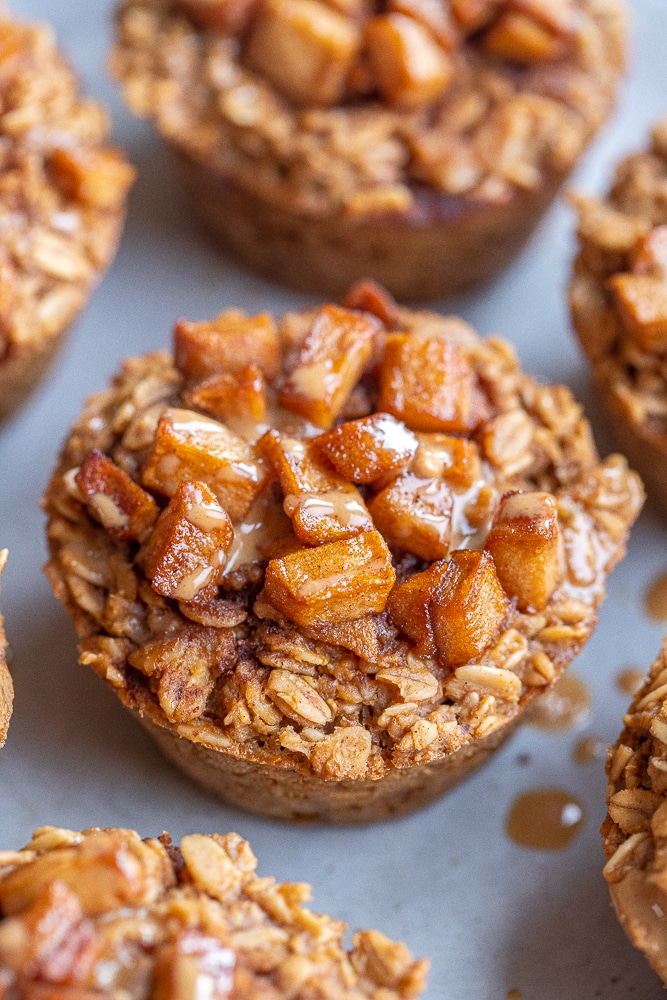
Caramelized Apple and Peanut Butter Baked Oatmeal Cups
Refreshing Kale Salad with Apples
Easy Apple Crisp Breakfast Bowls
BEETS
Beets are in the Beetroot, or Chenopodioideae, family, which also includes spinach, Swiss chard, and sugar beets. Beets are root vegetables known for their bright red color, although there are other varieties, including yellow beets. Both the beet root and the beet greens can be enjoyed raw or cooked. I like to grate the root and add them raw to salads or slice and roast them until they have a meaty like texture. Beets can also be pickled, steamed or fried. They have an earthy flavor that is slightly sweet.
Beets have many health benefits, including lowering blood pressure, liver support, improved digestion, and inflammation reduction. They’re packed with antioxidants, Vitamin C, choline, and Vitamin K, just to name a few. Root vegetables are also considered grounding and can help you feel more stable and connected to the earth. Additionally, beets are high in phytonutrients, which are nutrients found in certain foods that can help keep your body healthy and prevent disease.
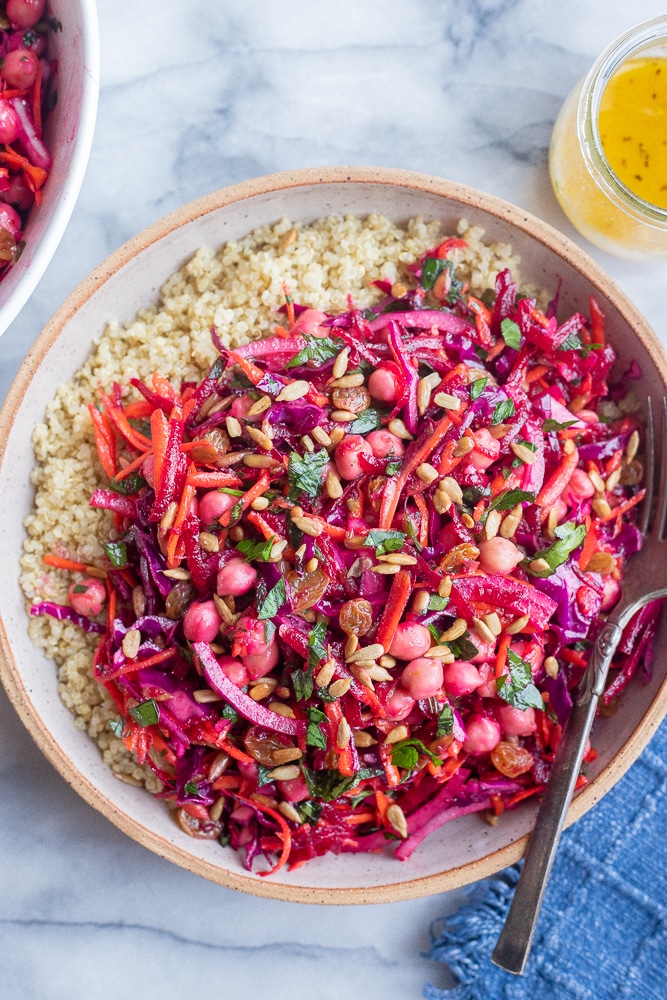
Beet and Carrot Salad with Chickpeas
Goat Cheese Beet and Balsamic Puff Pastry Bites
Vegan Beet Burgers with Brown Rice
Roasted Beet Chickpea and Black Rice Bowls
Healthier Chocolate Cupcakes with Raspberry and Beets
BELL PEPPERS
Peppers are in the nightshade family and all types of peppers are in season now. Bell peppers are probably the kind that I cook with most often though. Green and red bell peppers are commonly used in recipes like pizza and fajitas, but they also come in yellow, orange and purple colors. Green bell peppers can be slightly bitter in flavor, but the rest of the colors are a little sweeter. I use bell peppers in so many of my recipes! I chop them up and throw them into soups, salads, scrambled eggs, wraps and so much more. They are great raw with creamy ranch dip or hummus, or they can also be sautéed, roasted or cooked in soup.
Bell peppers are great for immune health because they are high in Vitamin C, essential for keeping your immune system healthy and fighting off sickness. Vitamin C is also very beneficial in healing wounds and collagen production. Bell peppers are high in antioxidants, which also help protect the immune system. Antioxidants are molecules that can neutralize harmful free radicals, which otherwise can damage cells and tissues in our bodies.
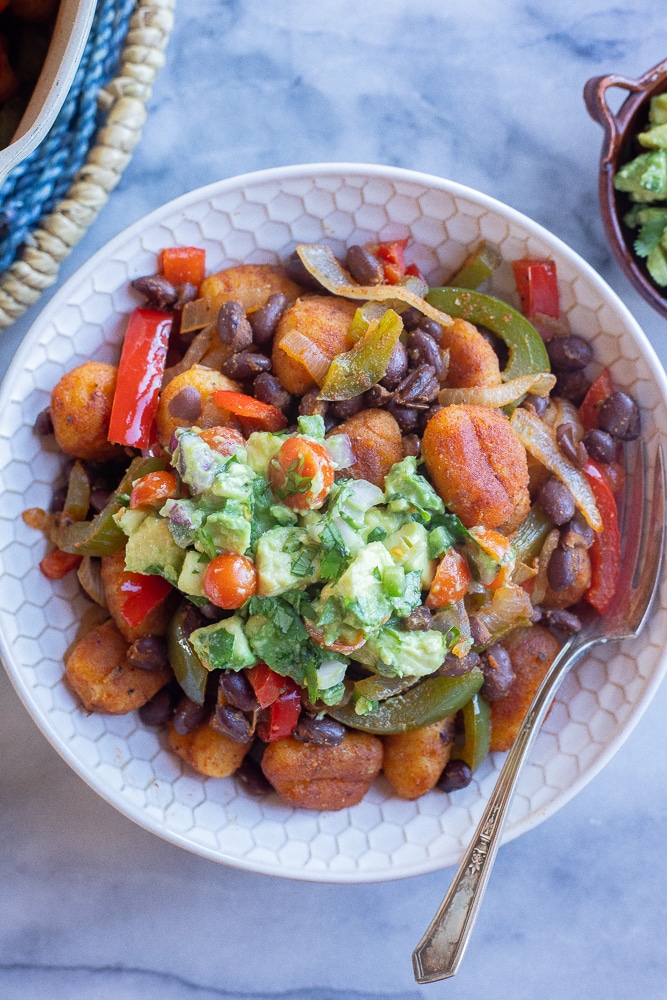
Vegetarian Stuffed Peppers with Cauliflower Rice
Fajita Gnocchi Skillet with Avocado Salsa
Loaded Breakfast Stuffed Peppers
Vegetarian Fajita Rice Casserole
Vegetarian Cheesy Tortellini Casserole
BROCCOLI
Broccoli is a cruciferous vegetable that is in the mustard family, along with cabbage, Brussels sprouts and kale. There are a few different varieties of broccoli, but Calabrese is the most common one in the United States and probably the one that most of us usually cook with. Broccoli can be enjoyed raw, roasted, steamed or fried. I like chopping raw broccoli into bite sized pieces and adding it to salads and keeping steamed, or frozen, broccoli on hand to toss into pasta or stirfry.
Broccoli is a powerhouse vegetable that offers lots of health benefits. Broccoli is packed with tons of antioxidants, which help reduce unwanted inflammation inside the body. Broccoli also contains a large amount of both fiber, which is important for digestion and vitamin C which helps boost the immune system. One cup of broccoli has about as much vitamin C as an orange.
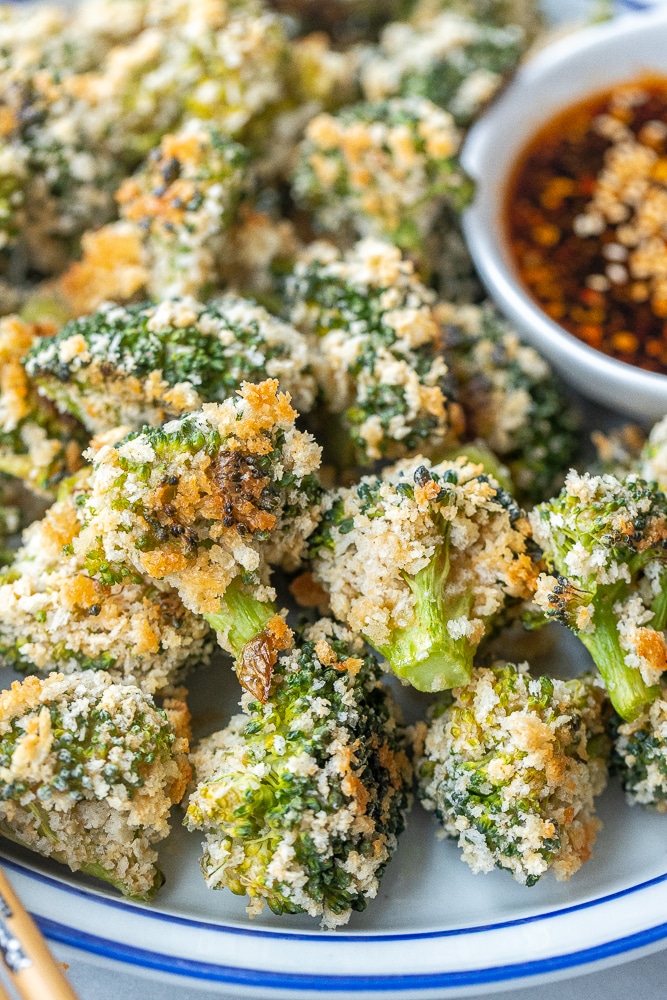
Chili Garlic Broccoli with Chickpeas
Crunchy Broccoli Salad with Maple Mustard Dressing
Veggie Packed Broccoli Cheddar Soup
Crunchy Baked Broccoli with Spicy Soy Sauce
Cheesy Broccoli Rice Casserole Bites
BRUSSELS SPROUTS
Brussels sprouts are in the Brassicaceae, or crucifers, family, which also includes broccoli, cauliflower, kholrabi and kale. They resemble tiny little cabbages that grow together on a big stalk. Brussels sprouts have always gotten a bad wrap for being steamed and stinky, but they can actually be super delicious when cooked well. Brussels sprouts can be served both raw and cooked. I like to thinly grate raw sprouts and add them to salads and slaws. They are also great roasted or sautéed. You can, of course, steam them but I would recommend not over steaming and seasoning with at least salt and pepper.
Vegetables in the cruciferous family are packed full of health benefits. They’re a good source of fiber, antioxidants, vitamin C, vitamin K and carotenoids. Brussels sprouts also contain Sulforaphane, which is a compound that can help lower blood pressure and cholesterol. If you are someone who does have issues digesting vegetables from this family, I would recommend that you avoid eating them raw and try eating smaller portions of them, to avoid any stomach upset.
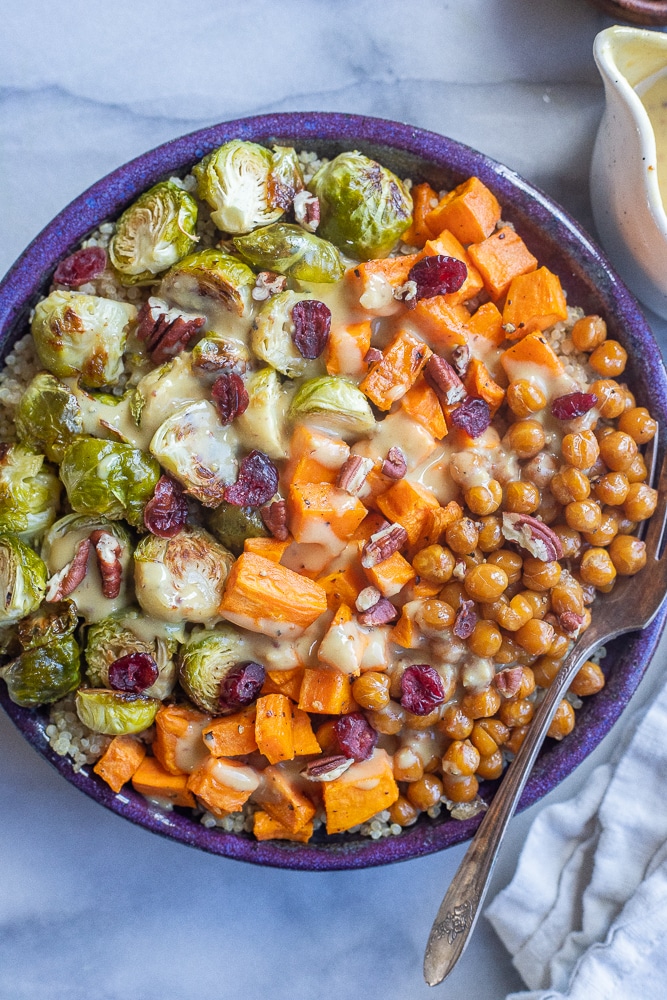
Roasted Brussels Sprout Bowls with Honey Mustard Dressing
Lemon Pepper Roasted Brussels Sprouts
Easy Roasted Vegetable Pasta with Parmesan
CARROTS
Carrots are springtime root vegetables that are pretty easy to grow. Orange carrots are most commonly seen and sold at the grocery store, but you can also grow a rainbow colored variety. Carrots come in different sizes, some are short and wide, while others are long and thin. Baby carrots, however, are not an actual carrot variety, instead they are made with a machine using regular sized carrots. I love to snack on raw carrots or add them to salads and wrap. Carrots can also be roasted, sautéed, cooked into soup or baked into cakes or muffins. They are a very versatile vegetable that can be used in both sweet and savory recipes. Carrots are probably most eaten raw, with ranch or hummus, in the US though! Or baked into carrot cake
It’s true that carrots are good for your eyes! Carrots are high in beta carotene, a nutrient that your body turns into Vitamin A. Vitamin A is essential for maintaining healthy eyes and good vision. Carrots are also a good source of fiber and antioxidants. Fiber helps with digestion, but can even help lower the risk of heart disease. Soluble fiber from carrots binds to cholesterol particles and helps expel them out of your body, through stool.
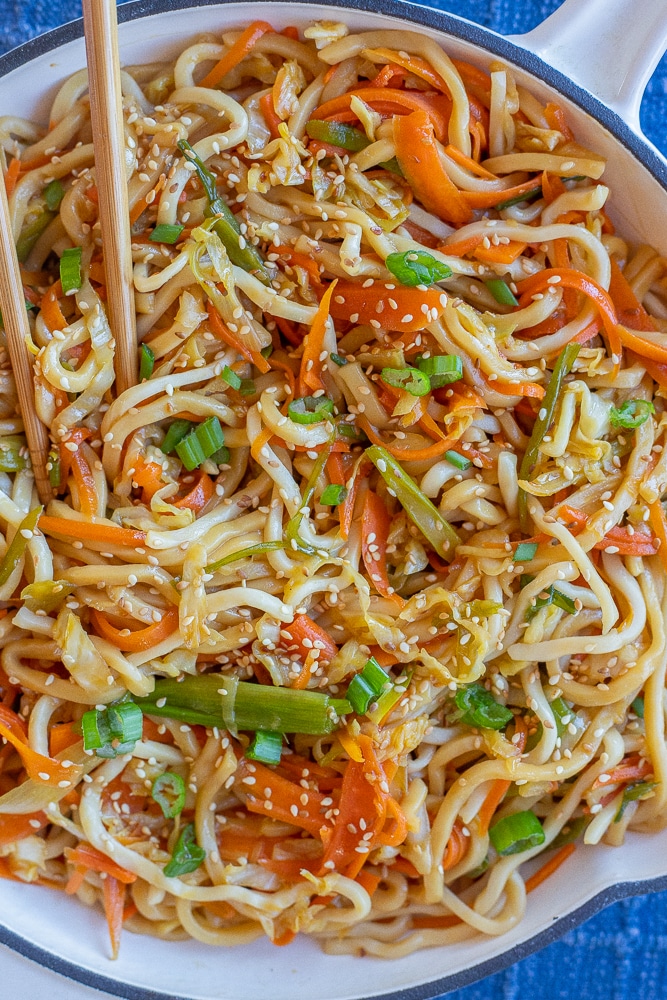
Carrot and Chickpea Salad with Orange Maple Dressing
Roasted Carrot and Dill Hummus
Noodles with Cabbage and Carrots
Curried Sweet Potato Carrot and Red Lentil Soup
CORN
Corn is in the grass family and is technically considered to be a fruit. Corn on the cob is super popular in the summertime and is such a great way to enjoy fresh corn! There are 17 different types of corn, but the most common type in the United States is called Dent, or field, corn. Sweet corn is also pretty common, especially if you’re buying canned corn. I probably cook with canned corn more often than fresh corn, because it’s more convenient to store in the house. Corn is super versatile and can be added to so many different recipes, from corn salsa to cornbread. Corn can be served warm or cold and is great added to salads, soups, tacos and more!
Corn has many health benefits, due to its high content of fiber, vitamins, minerals and antioxidants. Corn is a good source of both soluble and insoluble fiber, making it great for digestion. You might be wondering, if it is good for digestion, why does it come out whole in the stool? The reason for that is because the outside of the corn kernel is made of cellulose, which cannot be digested by humans, but the body does make sure it gets all the other nutrients out of the corn first! The fiber in corn also helps regulate blood sugar levels by slowing down the absorption of glucose.

CAULIFLOWER
Cauliflower belongs to the cruciferous family, which also includes broccoli, kohlrabi, kale and brussels sprouts. I use white cauliflower more than any other variety, but you can also find purple and yellow cauliflower. The taste varies slightly but they can all be used interchangeably in your recipes. Cauliflower can be cooked so many different ways. It can be roasted, steamed, charred, pureed and even turned into rice (a veggie version anyhow 🙂 ). My personal favorite way to cook cauliflower, and what is pictured below, is coating it with batter and a crispy coating, baking it in the oven until crispy and then tossing it in a flavorful sauce.
Cauliflower has similar health benefits as most of the other cruciferous vegetables. It’s a good source of fiber, antioxidants, vitamin C, vitamin K and carotenoids. Cauliflower also contains Sulforaphane, which is a compound that can help lower blood pressure and cholesterol. If you are someone who does have issues digesting vegetables from this family, I would recommend that you avoid eating them raw and try eating smaller portions of them, to avoid any stomach upset.

Golden Roasted Cauliflower with Coconut Curry Tahini Dressing
Buffalo Cauliflower Tacos with Ranch Slaw
Vegetarian Cauliflower Fried Rice
FRESH HERBS
Fresh herbs can be a mix of annuals and perennials. Herbs like Basil and cilantro need to be replanted each year, but sage, thyme, lavender and mint will all grow back, year after year. Fresh herbs are less potent than their dried counterparts and I use them all the time to add flavor and color to my recipes. Fresh herbs are always great to have on hand to use as a colorful garnish for pastas, salads and soups or they can be used as more of a main ingredient. Pesto is one of my favorite things to make when I have extra fresh herbs on hand and can even be made with herbs besides basil, like mint or cilantro.
Herbs are very potent and have been used for centuries in healing capacities. Each herb is unique and has it’s own health benefits. Garlic, turmeric, oregano and sage are all great for boosting the immune system, while ginger, peppermint, parsley and basil aid in digestion. The benefits of herbs can be enjoyed through adding fresh herbs to your recipes or taking dried herb capsules. It is always a good idea to consult with your doctor before starting any new herbal supplements.
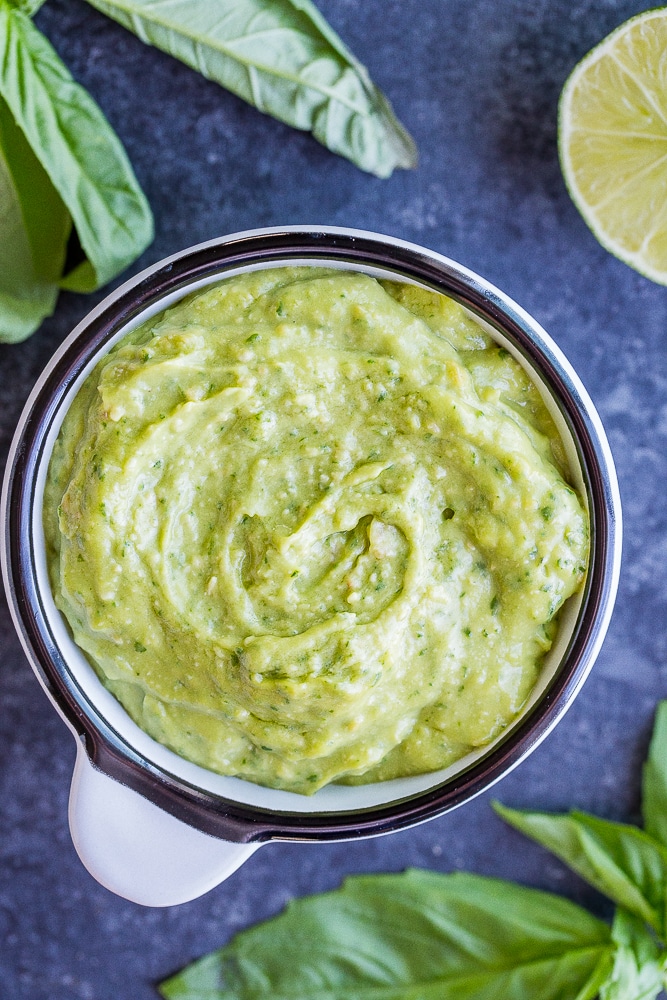
Herby Cucumber Salad with Feta and Chickpeas
Cilantro Lime Cucumber Salad with Avocado
GREEN BEANS
Green beans belong to the pea family, Fabaceae, and grow in over 500 different varieties. As the name states, green beans are most commonly green in color, however you can find some that are yellow or purple! Green beans are great mid-late summer crops that are usually either bushy or vine-like plants that like to grow up poles. I love the taste of raw green beans, but I usually find myself eating them cooked. Last year I grew them in the garden and enjoyed them fresh, but I also like to buy them frozen so I have them on hand all year long. Canned green beans are also commonly sold in grocery stores, but I don’t find them to be as great of quality as the frozen ones.
Green beans are very nutrient rich and offer so many health benefits. They are high in vitamin C, vitamin K, folate, fiber, iron and antioxidants. Because of this they are helpful to pretty much every process that your body does, including digestion, immune support, heart health, weight management, eye health, fetal development, blood health and even cancer prevention.
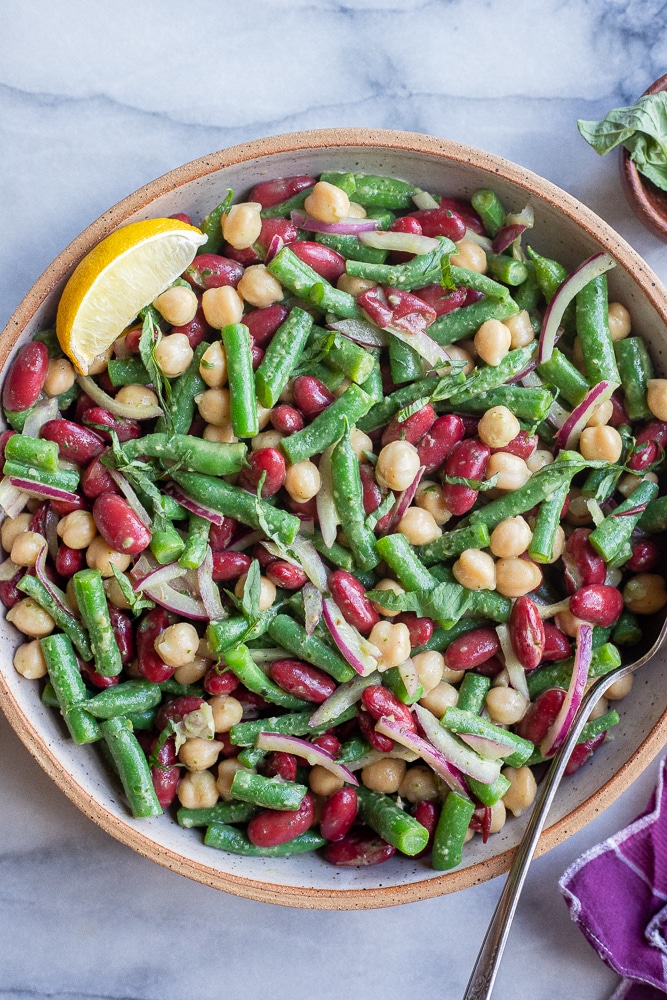
Three Bean Salad with Basil Vinaigrette
Egg Free Crispy Baked Green Bean Fries
KALE
Kale is in the Crucifers family and comes in a few different varieties including: curly, lacinato and purple. Kale is a hearty green that can withstand colder temperatures. Baby kale has also become quite popular these days and is still hearty, but a little more similar to baby spinach or lettuce. Kale can be enjoyed both cooked and raw. I love massaging raw kale and adding it to salads. It’s hearty and has some texture, while also being refreshing. Kale wilts quickly, so it can easily be thrown into soups, stir fry and pastas.
Kale is considered a superfood because it’s packed with a variety of vitamins and nutrients. Dark leafy greens are important to include in our diets, and kale is a great way to do that. Kale contains four times more vitamin C than spinach and twice the amount of selenium. Kale is also low in calories, making it great for maintaining a healthy weight.
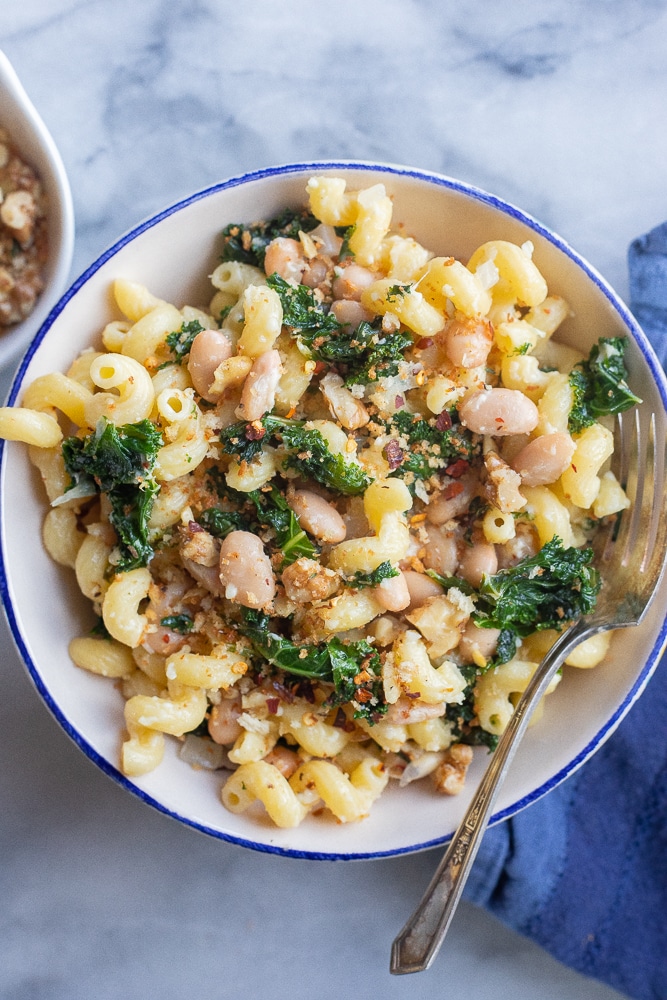
Chopped Kale Power Salad with Lemon Tahini Dressing
Kale and White Bean Pasta with Parmesan
Garlicky Kale with White Beans and Lemon
RADISHES
Radishes are in the mustard family and come in a few different varieties. Most people are probably used to seeing Red Radishes, which are commonly sold in grocery stores. These radishes are usually eaten raw and have a spicy, crisp taste. I usually just thinly slice radishes and throw them into salads, but you can also pickle them, grill them or even roast them in the oven. Roasting them mellows the sharp flavor a bit and adds some sweetness.
Radishes may be small, but they do pack quite a nutritional punch. Just half a cup of radishes gives you 14 percent of your daily recommended dose of vitamin C, which is a great boost for the immune system. They help support a healthy digestive system, and half a cup of radishes contains 1 gram of fiber. They are a natural antifungal, so they help keep candida growth in check. One cup of radishes contains only 9 calories and has hardly any fat, so they are also great for healthy weight management.
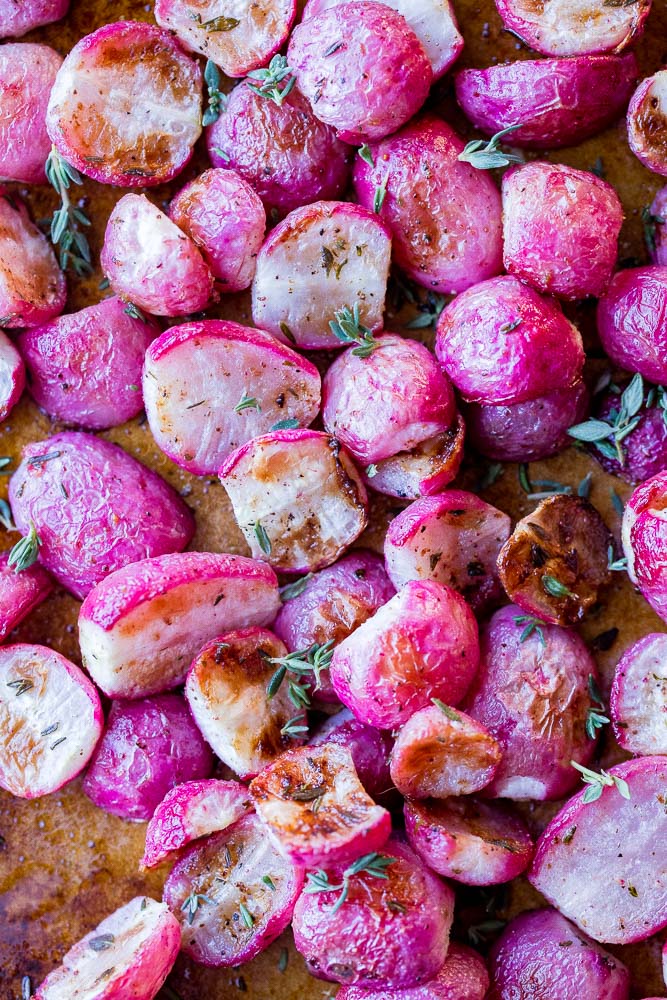
Roasted Radishes with Garlic and Herbs
Veggie Sushi Bowls with Quick Pickled Radishes
Crunchy Ranch Salad with Crispy Quinoa
Roasted Sweet Potato Black Bean Salad with Kale
SWEET POTATOES
Sweet potatoes are in the morning glory family, which also includes bindweed, moonflower and water spinach (which is not very common in the US). They come in a few different colors, including orange, red and purple. They are root vegetables, meaning they grow under the soil and have greens that grow above. The greens are edible, but the actual potato part is more commonly eaten. My favorite way to cook sweet potatoes is to roast them. I like to dice them into chunks or slice them into French fry shapes and then toss them with some spices. You can also mash sweet potatoes or bake them like you would a regular potato and add your favorite toppings.
Sweet potatoes provide many health benefits and are rich in vitamin A, vitamin C, potassium, fiber and antioxidants. The fiber in sweet potatoes is both soluble and insoluble, which really helps with digestion and gut health. The potassium and magnesium in sweet potatoes can help reduce blood pressure and stroke risk and can also lower cholesterol. Purple sweet potatoes, specifically, contain anthocyanins, which can help reduce inflammation inside the brain and lower the risk of developing memory issues later in life.

Roasted Sweet Potato Hummus Wraps with Honey Mustard
Sheet Pan Sweet Potato Fajitas with Black Beans
Vegan Sloppy Joe Stuffed Sweet Potatoes
TOMATOES
Tomatoes are in the nightshade family and come in many different varieties. They are considered a fruit, but they are often enjoyed like a vegetable. Most varieties of tomatoes are sweet and juicy and they come in many sizes, ranging from small cherry tomatoes to extra large beefsteak tomatoes. Tomatoes are one of my favorite ingredients and they can be used in so many different ways. I love eating tomatoes raw, straight from the garden, or with salt and pepper. Uncooked tomatoes can be added to salads, sandwiches and appetizer trays. They can also be cooked and made into salsas, pasta sauces and ketchup. The possibilities are really endless, and don’t forget about sun-dried tomatoes!
Tomatoes are high in antioxidants, which help neutralize harmful free radicals in the blood, The lycopene and potassium in tomatoes may help reduce the risk of chronic diseases, including heart disease and cancer. Lycopene can help reduce bad cholesterol and prevent artery blockages by inhibiting cholesterol synthesis and increasing the breakdown of LDL. Tomatoes are also high in vitamin C, which supports and boosts the immune system.
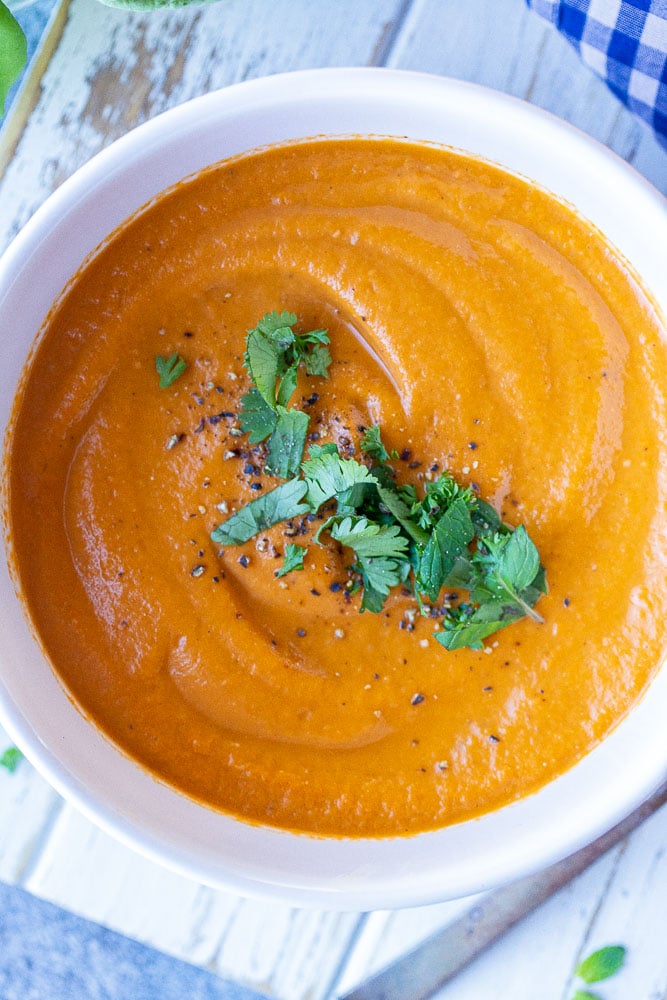
Herby Parmesan Tomato Pasta Salad
Summer Squash and Tomato Pizza
Tomato Herb Butter Beans with Pesto Rice
ZUCCHINI
Zucchini is in the squash family and is usually a very prolific garden plant. Most people are probably familiar with the regular, long green zucchini that they sell at grocery stores. There are other types of zucchini though, including one that is yellow. Zucchini has a very mild flavor on it’s own and easily softens when cooking. Zucchini can be enjoyed raw, but I most often see it sautéed, roasted or mixed into baked goods like zucchini bread. To me, zucchini tastes best when it’s been cooked until it’s starting to caramelize and brown. This cooking method brings out such amazing flavors and is great for adding to stir fry, pasta, salad, tacos and more!
Zucchini is high in nutrients and low in calories, making it very beneficial to the diet. It is loaded with fiber, water and potassium so it helps keep your digestive system on track, keep you hydrated, and help you manage a healthy weight. It also contains antioxidants that help reduce inflammation inside the body.
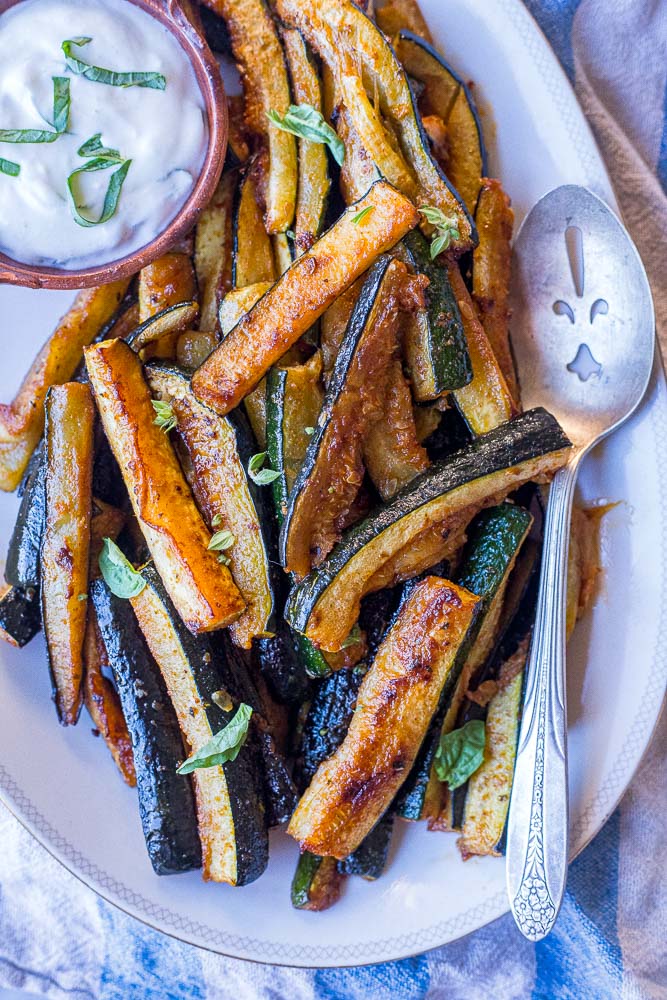
WINTER SQUASH
When I say winter squash, I’m referring to varieties like butternut, acorn, spaghetti, delicata, red kuri and pumpkin, which are all in the squash, or Cucurbitaceae, family. They’re hearty and they grow well in colder temperatures and usually have a long shelf life. Some have thick skin that needs to be peeled off, like butternut squash, while others like delicata squash have skin that can easily be eaten. Winter squash is best enjoyed cooked, in my opinion. I like to roast it and add it to bowls or wraps. Squash is also great in soups, stews and curries. Spaghetti squash has great texture and can be used in place of pasta.
Vegetables in the squash family are highly nutritious and are packed full with antioxidants, fiber, vitamin A, vitamin C and potassium. The antioxidants in squash can help fight off free radicals in the body, that otherwise can damage cells and cause disease. They also help reduce inflammation inside the body and boost the immune system. Squash is also low in calories and high in fiber, which is a combination that can help you maintain a healthy weight.
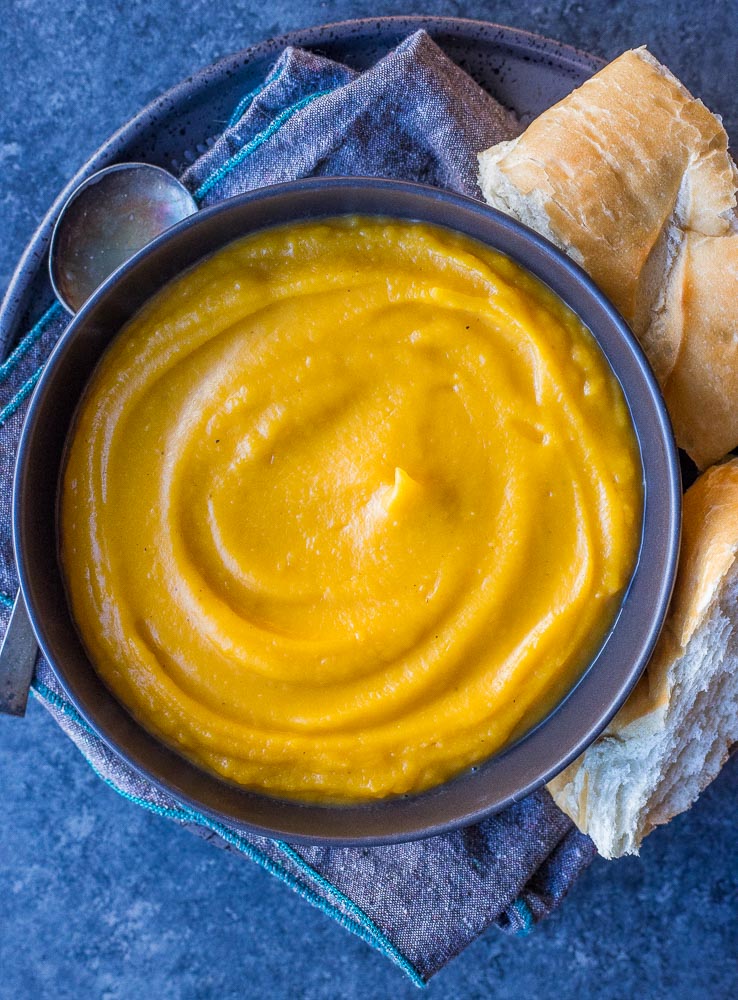
Easy Roasted Butternut Squash Soup


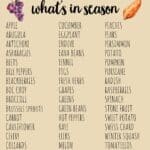
Leave a Reply